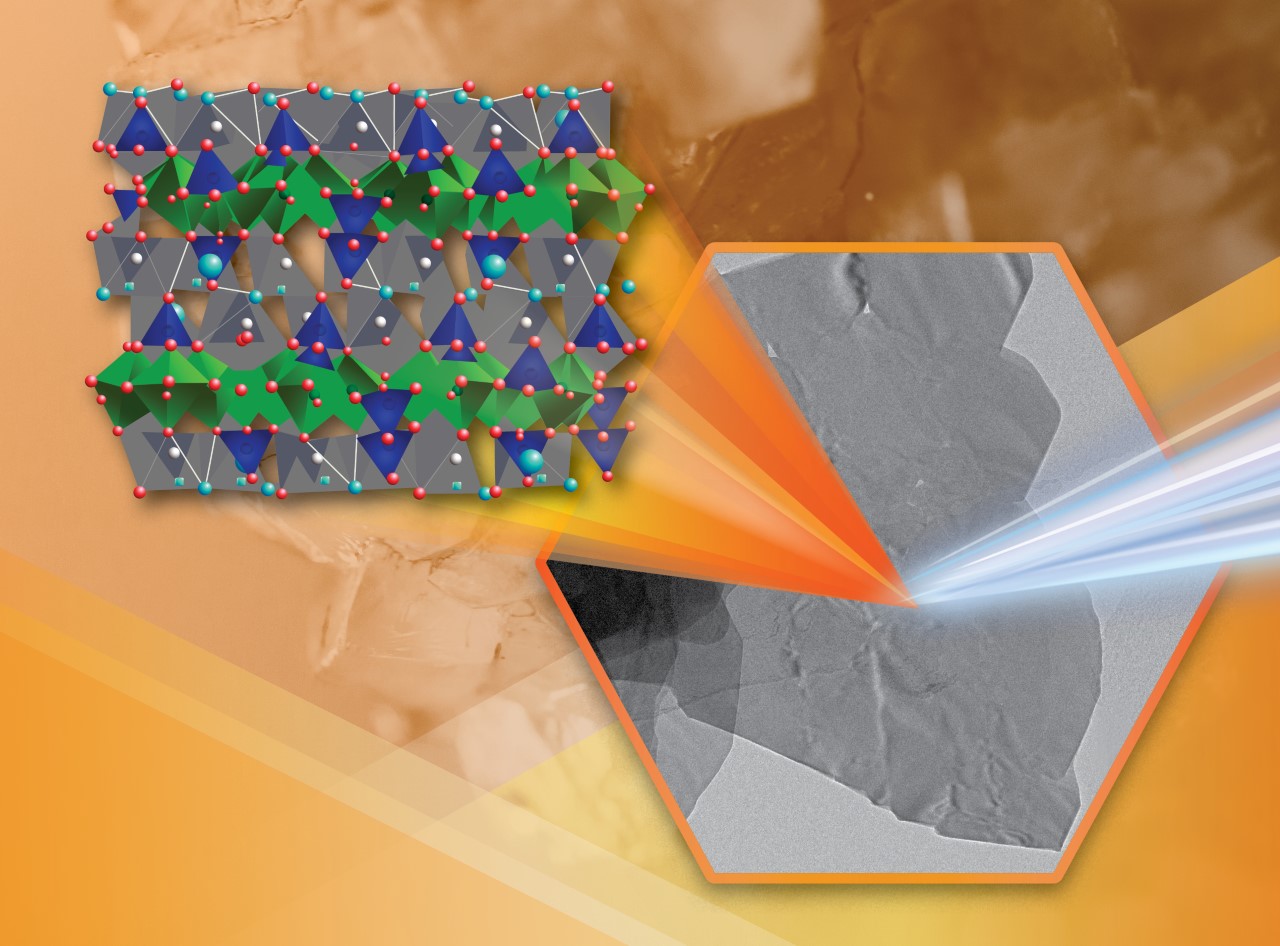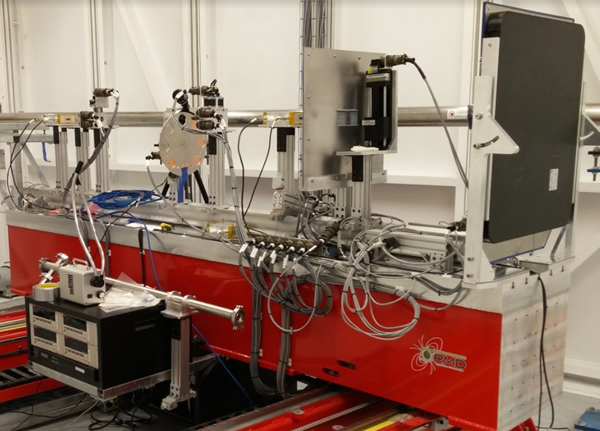International research team uncovers the structure of two arsenic-containing compounds 100 years after discovery
Using the Brockhouse beamline at the CLS, an international team of researchers was able to visualize for the first time how atoms are structured in samples of arseniosiderite and yukonite.
By Greg BaskySpecimen BM.62813 (arseniosiderite) from the collections of the Natural History Museum, London © The Trustees of the Natural History Museum, London.
Findings could be used to prevent arsenic contamination
An international team has used the Canadian Light Source at the University of Saskatchewan to uncover the elusive structure of two arsenic-containing compounds, information that can be used to prevent and predict arsenic contamination.

Arsenic occurs naturally in the environment, and it is present in ore deposits and the waste left behind by mining for gold, uranium, and other metals. The concern with arsenic-containing compounds, like yukonite and arseniosiderite, is that soil sources can find their way into waterways. Understanding how this happens on a structural level can help scientists -- and industry -- better understand how the two are formed and better protect the surrounding environment from potential arsenic contamination.
Discovered more than 100 years ago, yukonite and arseniosiderite, which are compounds of arsenic, calcium, iron and oxygen, have concealed their structure from scientists thanks to their low crystallinity. While it’s relatively easy to determine the structure of materials that have a high degree of crystallinity, because of the complexity in the way these minerals’ atoms are arranged, usual methods have come up short in painting a clear picture of their structure.
Using a special technique at the CLS called the pair distribution function (PDF), an international team of researchers from Canada, China, the USA, Italy, and Ireland was able to visualize for the first time how atoms are structured in samples of arseniosiderite, which is classified as semi-crystalline, and yukonite, which is considered a nano-crystalline mineral.

They matched the output of their PDF analysis to models that have been previously proposed by other researchers, thereby confirming the compounds’ general structures and providing even more detailed information about their makeup. The team’s findings were published recently in the journal Environmental Science Nano.
Graham King, Brockhouse Instrument Scientist at the CLS, said that while the PDF technique used at the Brockhouse high energy beamline has been around for decades, it has rarely been used to study minerals of this kind.
“We’ve brought a different tool to this area of research. It’s not a new method, but it hasn’t been applied to these kinds of materials before,” says King.
This project shows the promise of applying the PDF technique to other minerals with low crystallinity.
For McGill University graduate Mario Alberto Gomez, one of the project’s leads, it’s appropriate the discovery was made using the first Canadian beamline capable of doing this type of analysis. “I think it was quite fitting that this mineral (yukonite) was discovered in Canada, in the Yukon, a long time ago, and then we were doing research on it. And now we were able to finally get a clearer picture of it using a Canadian synchrotron.”
Originally from Canada but currently a visiting professor at China’s Shenyang University of Chemical Technology, Gomez draws parallels between his team’s findings and how knowing the structure of the COVID-19 coronavirus helps scientists understand how it functions, which in turn enables drug companies to develop vaccines.
“Understanding the structure-function relationship of these minerals helps you begin to understand how they form and will behave in different environments,” said Gomez.
For example, other natural and lab-based studies have shown that when yukonite and arseniosiderite are placed in a solution containing calcium, they release less arsenic. “Knowing their structure now will help us better understand why this happens.”
Graham King, Mert Celikin, Mario Alberto Gomez, Levente Becze, Valeri Petkov, and Giancarlo Della Ventura. “Revealing the structures and relationships of Ca(II)–Fe(III)–AsO4 minerals: arseniosiderite and yukonite.” Environmental Science Nano (2020). https://doi.org/10.1039/D0EN00503G.
This paper was featured on the inside front cover of Environmental Science: Nano.
For more information, contact:
Victoria Martinez
Communications Coordinator
306-716-6112
victoria.martinez@lightsource.ca
